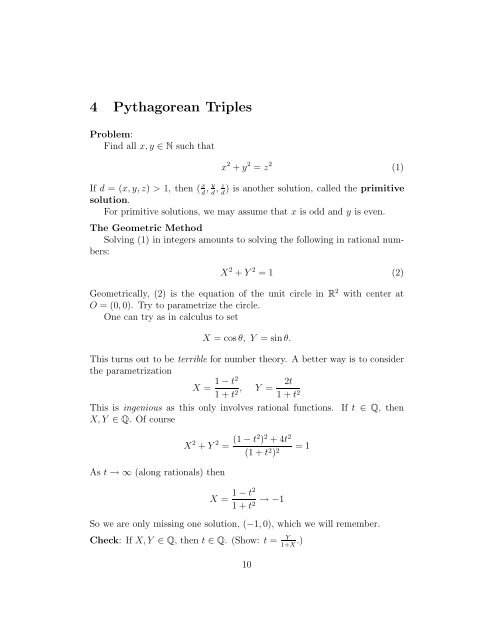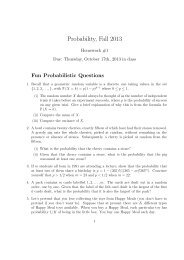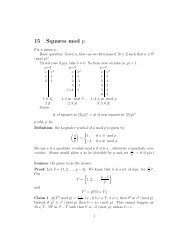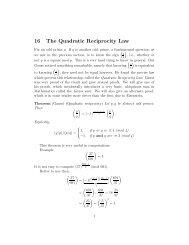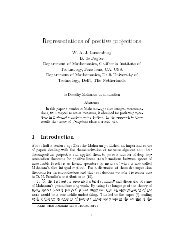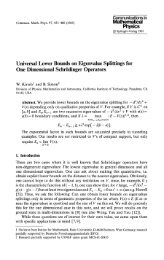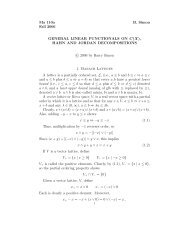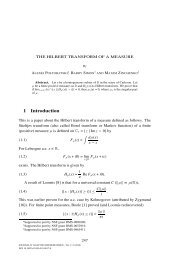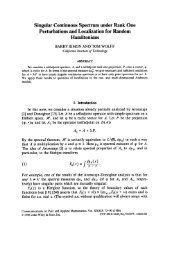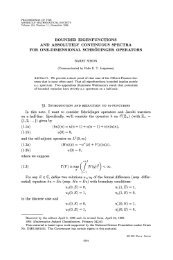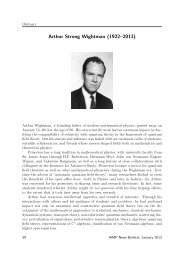1 Basic Notions - Caltech Mathematics Department
1 Basic Notions - Caltech Mathematics Department
1 Basic Notions - Caltech Mathematics Department
Create successful ePaper yourself
Turn your PDF publications into a flip-book with our unique Google optimized e-Paper software.
4 Pythagorean Triples<br />
Problem:<br />
Find all x, y ∈ N such that<br />
If d =(x, y, z) > 1, then ( x<br />
d<br />
, y<br />
d<br />
x 2 + y 2 = z 2<br />
(1)<br />
z<br />
, ) is another solution, called the primitive<br />
d<br />
solution.<br />
For primitive solutions, we may assume that x is odd and y is even.<br />
The Geometric Method<br />
Solving (1) in integers amounts to solving the following in rational numbers:<br />
X 2 + Y 2 =1 (2)<br />
Geometrically, (2) is the equation of the unit circle in R 2 with center at<br />
O =(0, 0). Try to parametrize the circle.<br />
One can try as in calculus to set<br />
X =cosθ, Y =sinθ.<br />
This turns out to be terrible fornumbertheory.Abetterwayistoconsider<br />
the parametrization<br />
1 − t2 2t<br />
X = , Y =<br />
1+t2 1+t2 This is ingenious as this only involves rational functions. If t ∈ Q, then<br />
X, Y ∈ Q. Ofcourse<br />
As t →∞(along rationals) then<br />
X 2 + Y 2 = (1 − t2 ) 2 +4t 2<br />
(1 + t 2 ) 2<br />
X =<br />
1 − t2<br />
→−1<br />
1+t2 =1<br />
So we are only missing one solution, (−1, 0), which we will remember.<br />
Check: IfX, Y ∈ Q, thent ∈ Q. (Show: t = Y<br />
1+X .)<br />
10


